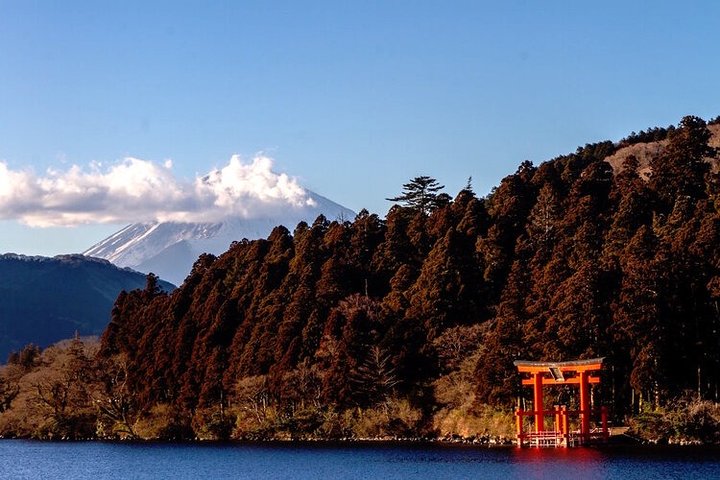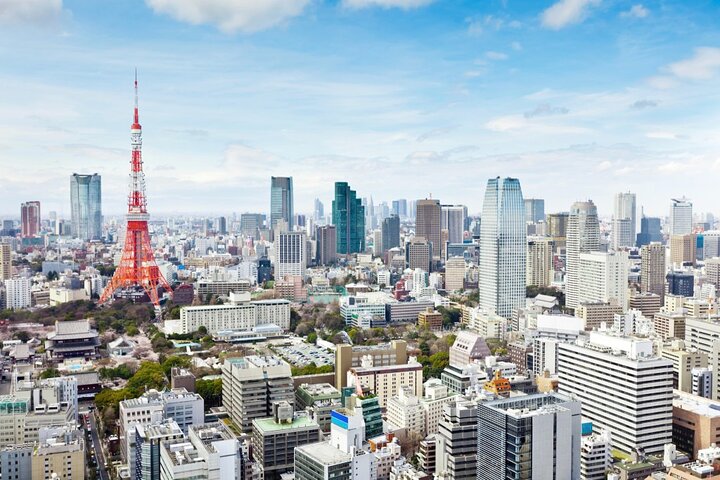Hakone: A Harmonious Blend of Nature, Culture, and Myth
Embark on a journey through Hakone, where nature and culture intertwine. From the spiritual serenity of Hakone Shrine to the mythical allure of Lake Ashi, discover the rich tapestry of experiences that await.
A Journey Through Time and Nature
As I embarked on the Hakone Adventure, I was filled with anticipation. The allure of Hakone, a place where nature and culture intertwine seamlessly, was irresistible. The journey began with a thrilling ride on the Shinkansen, Japan’s iconic bullet train, whisking me away from the bustling heart of Tokyo to the serene landscapes of Odawara Station. The transition from the urban sprawl to the lush greenery of the Fuji-Hakone-Izu National Park was a gentle reminder of Japan’s harmonious balance between modernity and tradition.
Upon arrival, a local train carried me to Hakone Yumoto, a quaint hot spring town that exudes a sense of timelessness. The air was crisp, and the scent of sulfur from the nearby hot springs lingered, hinting at the volcanic wonders that awaited. A short taxi ride brought me to the Hakone Shrine, a sacred site steeped in history. As I stood before the torii gate, partially submerged in the tranquil waters, I couldn’t help but feel a deep connection to the past. The shrine, dating back to 1667, is a testament to Japan’s enduring spiritual heritage, and learning about its ties to the first Emperor of Japan was a profound experience.
Embracing the Mystical and the Majestic
The next leg of the journey took me across the mystical waters of Lake Ashi. Legend has it that a nine-headed dragon once resided in these depths, causing steam eruptions in the surrounding mountains. As the boat glided across the lake, the majestic silhouette of Mt. Fuji loomed in the distance, a sight that never fails to inspire awe. The serenity of the lake, coupled with the mythical tales, created an atmosphere of enchantment that was both calming and invigorating.
Ascending the Hakone Ropeway, I was treated to panoramic views of the volcanic landscape. The journey to Owakudani, known as the ‘valley of hell,’ was a thrilling adventure. The sulfurous fumes and bubbling hot springs painted a vivid picture of the earth’s raw power. Here, I indulged in the local delicacy of black eggs, said to add seven years to one’s life. The experience was both unique and delightful, a perfect blend of culinary curiosity and cultural tradition.
Art and Reflection in the Open Air
The final chapter of this immersive journey led me to the Hakone Open Air Museum, Japan’s first of its kind. Nestled amidst the natural beauty of the mountains, the museum is a celebration of art and nature in perfect harmony. As I wandered through the outdoor exhibits, I marveled at the works of renowned artists like Henry Moore and Picasso, alongside the creations of Japanese artists such as Ryoji Goto and Takamichi Ito. Each piece seemed to converse with the landscape, creating a dialogue between human creativity and the natural world.
As the day drew to a close, I found myself reflecting on the rich tapestry of experiences that Hakone had offered. From the spiritual serenity of the shrine to the mythical allure of Lake Ashi, and the artistic inspiration of the open-air museum, each moment was a reminder of Japan’s unique ability to blend the ancient with the contemporary. The journey back to Tokyo on the Shinkansen was a time for contemplation, a chance to savor the memories of a day well spent in the embrace of nature and culture.






















































